NEWS & INSIGHTS


In the world of corporate income taxation, questions about fair apportionment and constitutional boundaries are as old as the tax codes themselves. One of the earliest and most influential cases to grapple with these questions is the 1920 U.S. Supreme Court decision in Underwood Typewriter Co. v. Chamberlain.
The case centered on whether Connecticut’s method of taxing a portion of a multistate business’s income violated the Due Process Clause or Commerce Clause of the U.S. Constitution. The Court upheld Connecticut’s approach—laying down foundational principles that still resonate in modern apportionment disputes, especially as states shift toward single sales factor and market-based sourcing models.
Here’s what happened—and why it still matters.
The Background: A Delaware Corporation with Operations Everywhere
Underwood Typewriter Company, incorporated in Delaware, manufactured typewriters at its factory in Connecticut but sold them throughout the country. It also had service and repair operations, sales branches, and inventory in various states. In short, it was a classic early 20th-century multistate manufacturer.
In 1915, Connecticut adopted a new corporate income tax law, which imposed a 2% tax on the portion of a company’s net income earned within the state. To determine that in-state portion, the law used an apportionment formula based on the location of the corporation’s real and tangible personal property—not its sales or payroll.
In Underwood’s case, 47% of its property was located in Connecticut, so the state taxed 47% of its total net income. The company objected, arguing that most of its income came from sales outside Connecticut and that the formula unfairly attributed too much income to the state.
The Legal Challenge: Does This Tax Violate the Constitution?
Underwood brought suit, arguing that Connecticut’s tax scheme violated two key constitutional protections:
1. The Commerce Clause
Underwood argued that the tax unfairly burdened interstate commerce, since the income being taxed was generated through nationwide sales and activity. Taxing 47% of its net income based solely on where its physical property was located, it argued, ignored the real source of its profits—sales across the country.
2. The Due Process Clause (14th Amendment)
The company also claimed the apportionment was arbitrary and unreasonable, and that it resulted in Connecticut taxing income that had no connection to the state, in violation of due process.
The company maintained that apportioning income based only on the location of property ignored the true source of its profits, which were generated across many states through customer sales and service.
The Supreme Court’s Decision: Apportionment Is Allowed (If It’s Not Arbitrary)
In a decision written by Justice Louis Brandeis, the Supreme Court upheld the constitutionality of Connecticut’s formula.
Key Takeaways:
Due Process Clause: The Court emphasized that state income taxes can be “rough approximations” and don’t need to pinpoint the exact share of income earned in the state. Unless the taxpayer can provide “clear and cogent evidence” that the apportionment is grossly distorted, the formula stands. Underwood failed to meet that burden.
Commerce Clause: The Court rejected the argument that taxing income from interstate business necessarily burdens interstate commerce. Because the tax was based on the in-state portion of the company’s business operations, it did not violate the Commerce Clause. The Court noted that the tax applied equally to both in-state and out-of-state corporations and didn’t condition the ability to do business on payment.
Apportionment by Property Value Was Reasonable: The Court found it acceptable that the apportionment formula was based solely on the value of tangible property. In Underwood’s case, all manufacturing occurred in Connecticut, so even if sales occurred out of state, the profits were reasonably attributed to activity based there.
“The profits of the corporation were largely earned by a series of transactions beginning with manufacture in Connecticut and ending with sales in other States.”
In other words, manufacturing is a key part of the income-generating process—and it happened in Connecticut.
Why This Case Still Matters—Over a Century Later
Despite being over 100 years old, Underwood Typewriter remains an essential case for anyone navigating state corporate income tax, particularly when dealing with apportionment formulas. It established core principles that are regularly cited today, including:
States may use formulas to apportion income without violating due process or commerce protections—as long as the result is not grossly unfair.
Apportionment need not be precise, but it must be rationally related to in-state activity.
A taxpayer challenging apportionment bears the burden of proving actual distortion.
These same principles come up in modern disputes involving market-based sourcing, digital services, and single sales factor methods—especially when companies claim that a state is taxing more than its fair share of income.
A Companion to Moorman—and a Warning to Taxpayers
If Moorman Manufacturing Co. v. Bair (1978) is the high-profile case that validated single sales factor apportionment, Underwood Typewriter is its quieter, but equally important, predecessor. Together, these cases create the legal backdrop for most modern apportionment litigation.
They also underscore this important strategic lesson for taxpayers: You must prove distortion to win. It’s not enough to say a formula seems unfair or that another formula would be better. Courts want numbers, evidence, and a clear showing that the income being taxed has no meaningful connection to the state.
Final Thoughts: Formulas Aren’t Perfect—But They’re Constitutional
Underwood Typewriter Co. v. Chamberlain teaches us that apportionment formulas are built for administrability, not precision. States have the authority to divide up a business’s income using reasonable proxies—whether based on property, payroll, or sales—so long as the result isn’t arbitrary or confiscatory.
For multistate businesses operating in today’s complex tax environment, the case still stands as a warning: Be prepared to support your apportionment position with real-world data and accounting analysis—or risk seeing your arguments typed up and stamped “denied.”
© 2025 Jeanette Moffa. All Rights Reserved.
Share
Additional Articles by the SALTy Orange at Moffa Tax Law:
Florida Repeals Sales Tax on Commercial Rent — Will DeSantis Sign the Landmark 2025 Tax Cut?
NEWS & INSIGHTS Florida Repeals Sales Tax on Commercial Rent — Will DeSantis Sign the Landmark 2025 Tax Cut? …
NEWS & INSIGHTS Is Bottled Coffee Subject to Florida Sales Tax? The Answer May Surprise You Is Bottled Coffee Subject…
Inside the ABA SALT Committee Meeting: What Tax Professionals Need to Know About the Annual May Conference in D.C.
NEWS & INSIGHTS Inside the ABA SALT Committee Meeting: What Tax Professionals Need to Know About the Annual May Conference…

Jeanette Moffa, Esq.
(954) 800-4138
JeanetteMoffa@MoffaTaxLaw.com
Jeanette Moffa is a Partner in the Fort Lauderdale office of Moffa, Sutton, & Donnini. She focuses her practice in Florida state and local tax. Jeanette provides SALT planning and consulting as part of her practice, addressing issues such as nexus and taxability, including exemptions, inclusions, and exclusions of transactions from the tax base. In addition, she handles tax controversy, working with state and local agencies in resolution of assessment and refund cases. She also litigates state and local tax and administrative law issues.


